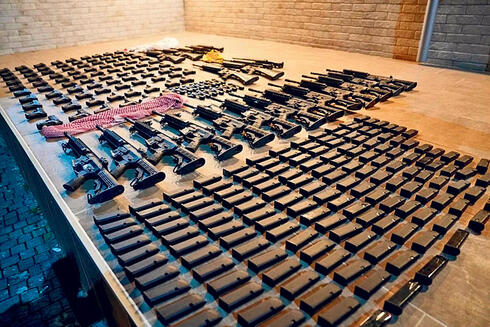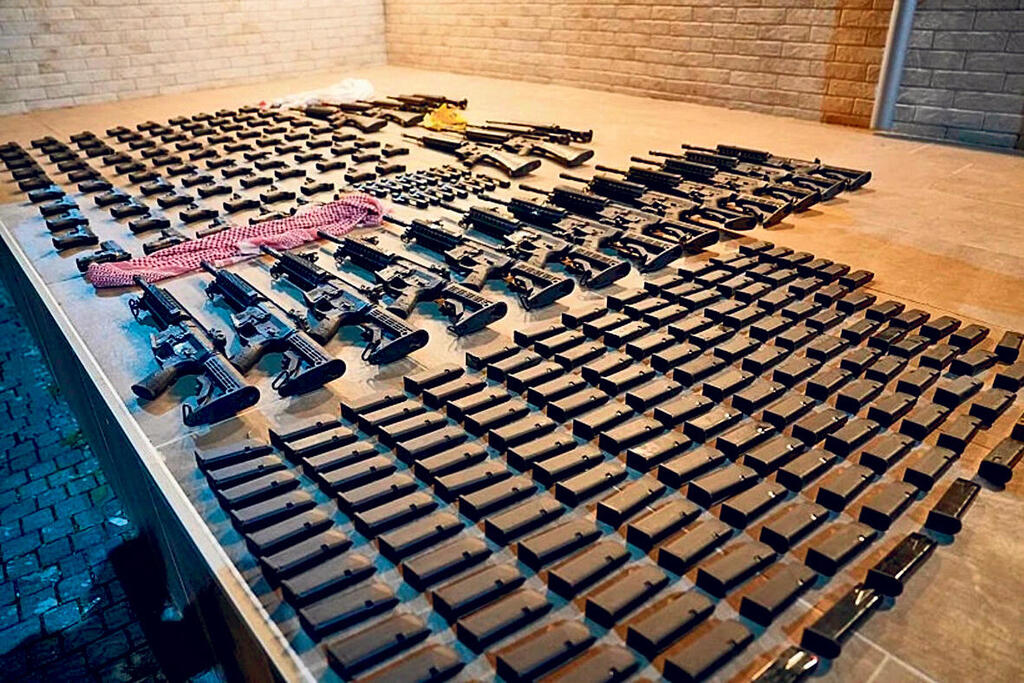
From an M16 to an AK47: How much do smuggled firearms cost on the streets?
The smuggling of weapons and drugs returned to the headlines following the war in Gaza, but Israel has been struggling to deal with this problem for many years
The war between Israel and Hamas highlighted the issue of weapons and goods smuggling from Sinai to Gaza through the Philadelphi Route, which the IDF does not control. This, however, is just one aspect of the broader problem involving the trafficking of weapons and drugs. These illicit activities pose risks of reaching the hands of terrorist organizations or funding their operations in various Palestinian-controlled areas such as Judea and Samaria, with Arab residents and citizens of Israel also being involved in these activities.
Israel has two other land borders susceptible to smuggling – one with Egypt from Eilat to the Kerem Shalom crossing, and another with Jordan from Eilat to Hamat Gader. These extensive borders, spanning 208 km with Egypt and 309 km with Jordan, present challenges in curbing smuggling activities. The section of the Jordanian border separating Jordan from Judea and Samaria is 71 km long.
Smuggling activities can be categorized into two main types: weapons, such as rifles and pistols from the Jordan region destined for criminal organizations, but which sometimes also reach terrorists, and drugs originating from Egypt. The proximity of the Jordanian border to Syria and Iraq, where Iran supplies weapons, makes it a preferred route for terrorist operatives in Judea and Samaria.
According to intelligence estimates from the IDF and Israel Police, smuggled weapons are often sold at lower prices in Judea and Samaria compared to Israel. For instance, a Kalashnikov rifle valued at NIS 20,000 (approximately $5,480) in Judea and Samaria is sold for NIS 45,000 ($12,300) in Israel. An M16, sold for NIS 70,000 ($19,200) in Israel, goes for NIS 50,000 ($13,700) in Judea and Samaria, and a pistol, valued at NIS 35,000 ($9,600) in Israel, is sold for NIS 10,000 ($2,750) in the same region.
On the border with Egypt, excluding the Philadelphi Route and the Rafah crossing not controlled by the IDF, the primary smuggling involves drugs. This area is favorable for drug smugglers due to drug cultivation in the adjacent Sinai area and its flat geography, enabling shepherds from both sides of the fence to exchange drug packages.
When the value of a kilo of cocaine is estimated at NIS 200,000 ($54,800), a kilo of heroin at NIS 100,000 ($27,400), a kilo of marijuana at NIS 40,000 ($11,000) and a kilo of Hashish for NIS 20,000 ($5,480) - one can understand the great incentive of Bedouin shepherds in the region to participate in drug smuggling.
The estimated value of seized drugs and drug smuggling between 2020-2022 is approximately NIS 494 million ($135 million), with values of about NIS 135 million in 2022, NIS 209 million in 2021, and NIS 150 million in 2020.
Even during the war, attempts to smuggle ammunition from the Jordanian border persist. While official figures for 2023 are unavailable, in November, the police, in collaboration with the IDF, seized 120 pistols, 17 M16 rifles, and 250 cartridges worth around NIS 6 million ($1.64 million). Four individuals from the Bedouin diaspora were arrested on suspicion of involvement in one of the largest smuggling operations in recent years














